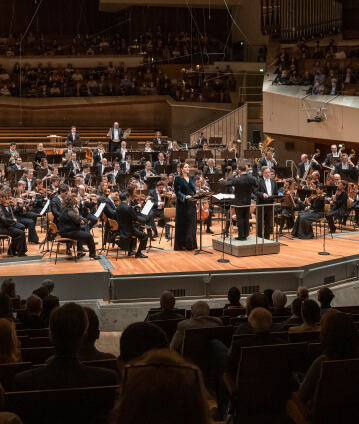Kirill Petrenko conducts Schulhoff, Sinigaglia and Zemlinsky

Under this season’s theme “Lost Generation”, Kirill Petrenko devotes this concert to three Jewish composers who suffered anti-Semitic persecution during the Nazi regime. Erwin Schulhoff’s Second Symphony fascinates in its playing with styles such as jazz. Two works full of Italian temperament by Leone Sinigaglia will be heard, with concertmaster Noah Bendix-Balgley. The concert closes with Alexander Zemlinsky’s Lyric Symphony, with Lise Davidsen and Christian Gerhaher.
Erwin Schulhoff’s Second Symphony was written in the early 1930s, when the composer turned away from the avant-garde style of his youth to write “relentless” and “uncompromising” music. However, unlike the setting of the Communist Manifesto composed a little later, little of this can be heard in this rather Neoclassical symphony. The jazz-inspired scherzo movement, in which muted trumpet, banjo and saxophone are used, recalls the sophisticated nonchalance of Kurt Weill.
The Turin-born Leone Sinigaglia was on the one hand strongly influenced by the German-Austrian tradition, but on the other hand remained loyal to his northern Italian homeland, as shown by the Rapsodia piemontese for violin and orchestra, performed here by the Philharmoniker’s first concertmaster Noah Bendix-Balgley.
Stylistically, Alexander Zemlinsky stands between Gustav Mahler and Arnold Schoenberg, with whom he had close personal and artistic ties. The atmospherically dense and impressively orchestrated Lyric Symphony for two solo voices and orchestra is considered the composer’s masterpiece. The vocal settings are based on texts by the Indian Nobel Prize winner Rabindranath Tagor.
© 2022 Berlin Phil Media GmbH
Related interviews